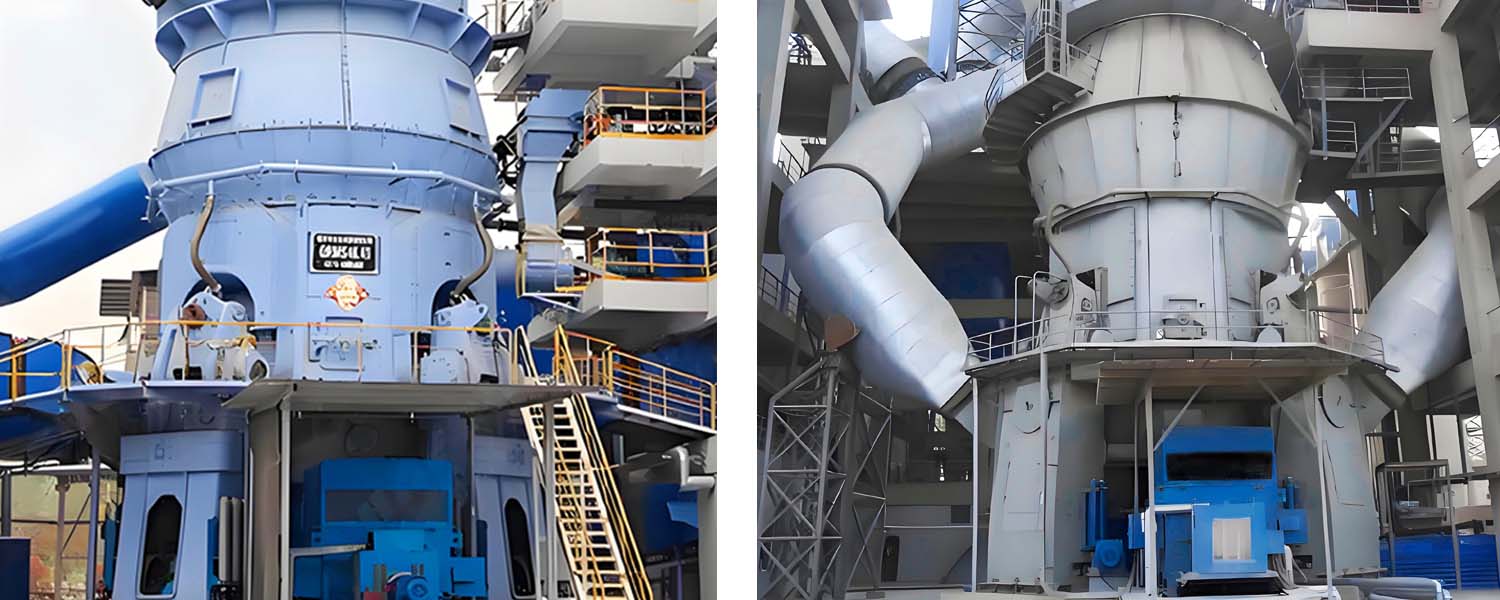Introducción: El papel crítico de los molinos verticales en la producción de cemento
Los molinos verticales de materias primas son equipos de molienda esenciales en la fabricación de cemento, ya que influyen directamente en la eficacia de la producción, el consumo de energía y la calidad del producto. Sin embargo, las fugas de aire en los molinos verticales son un problema común pero costoso, que conduce a:
✔ Mayor consumo de energía (aumento de la carga del ventilador)
✔ Reducción de la producción del molino (pérdida de material y molienda inestable)
✔ Desgaste prematuro del equipo (daños en juntas y tuberías)
✔ Finura inconsistente del producto (mal rendimiento de la molienda)
Esta guía explora las causas fundamentales de las fugas de aire en molinos verticales de rodillos y ofrece soluciones de ingeniería para mejorar la estanquidad, reducir los tiempos de inactividad y disminuir los costes de explotación.
I. Principales impactos de las fugas de aire en los molinos de rodillos verticales
1. Aumento del consumo energético
Causas de las fugas de aire pérdida de calorobligando a los molinos a consumir aire extra caliente para mantener la temperatura.
Mayor demanda de potencia del ventilador (por ejemplo, el uso de energía del ventilador de circulación aumenta en 8,6 kWh/t).
2. Reducción de la capacidad de producción
El aire que escapa se lleva comida cruda, disminuyendo la carga del molino y reducción del rendimiento.
3. Desgaste acelerado del equipo
Entrada de polvo de daños por fugas juntas de rodillos, cojinetes y tuberías, aumentando los costes de mantenimiento.
4. Mala calidad del cemento
El flujo de aire incontrolado interrumpe eficacia de la molienda, causando partículas demasiado gruesas o finas.
II. 5 causas principales de las fugas de aire en los molinos verticales
1. Juntas desgastadas o dañadas
Juntas de rodillos, juntas de alimentadoresy juntas de eje se degradan con el tiempo, creando lagunas.
2. Conexiones de tuberías sueltas
Mal ajustado conductos entre el molino y el colector de polvo permitir la salida del aire.
3. Diseño ineficiente del alimentador de bloqueo
Alimentadores de rueda segmentada con huecos incorrectos causan derrame de material y pérdida de presión.
4. Estructura débil del sello del rodillo
Tradicional juntas planas carecen de flexibilidad, fracasando bajo vibraciones del molino y cambios de temperatura.
5. Sistema de descarga de escoria defectuoso
- Válvulas monocomando se atascan fácilmente, mientras que tolvas abiertas exponer el molino a flujo de aire incontrolado.
III. Soluciones probadas para detener las fugas de aire de los molinos verticales
1. Actualice a juntas de alto rendimiento
✔ Sustituir juntas estándar con juntas onduladas de silicona para una mayor elasticidad y durabilidad.
2. Refuerzo de juntas y bridas de tuberías
✔ Uso juntas de alta temperatura y compruebe el par de apriete de todos los tornillos durante el mantenimiento.
3. Instalar alimentadores de bloqueo avanzado
✔ Cambie a alimentadores rotativos con huecos ajustables para equilibrar el flujo de material y el sellado.
4. Optimizar el diseño de la junta del rodillo
✔ Implementar juntas laberínticas o sistemas neumáticos de estanquidad para una fiabilidad a largo plazo.
5. Rediseñar el puerto de descarga de escoria
✔ Sustituir válvulas de clapeta con válvulas de cortina de material no motorizadas que utilizan presión del sistema para el sellado automático.

IV. Estudio de caso: Una fábrica de cemento de 4500 t/d ahorra 2,58 millones de yuanes al año
Problema: A Molino vertical TRM53.4 sufrió graves fugas, causando:
Niveles de oxígeno en la cola del horno: 10,3% (frente al ideal de 5-7%)
Uso de la energía del molino de crudo: 16,5 kWh/t
Temperatura de salida baja: 45-55°C
Soluciones aplicadas:
Instalado juntas de rodillo onduladas.
Actualizado a un alimentador rotativo de bloqueo.
Modificado descarga de escoria con válvulas selladas a presión.
Resultados:
✅ Fuga de aire reducida por 60%
✅ Ahorro de energía: 3,8 kWh/t
✅ La producción aumentó en 12%
✅ Ahorro anual de costes: ¥2,58 millones
V. Conclusión: Maximice el rendimiento del molino con un sellado adecuado
Las fugas de aire en los molinos verticales de materias primas son un problema complejo y crítico. Las empresas deben abordarlo desde múltiples ángulos, incluidos el diseño, la instalación y el mantenimiento. Optimizando el diseño de los equipos, mejorando el mantenimiento y aumentando la eficacia del sellado, las empresas pueden reducir eficazmente las fugas de aire, aumentar la estabilidad operativa de los molinos verticales y mejorar la eficacia de la producción. Si tienes alguna pregunta sobre cómo mejorar el rendimiento de los equipos, no dudes en Contacto. Darko está aquí para ofrecerte soluciones y apoyo profesionales.

